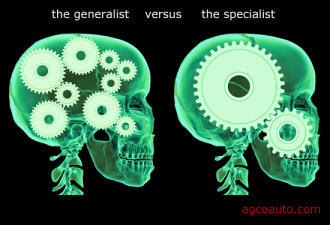With the multiple forms of communication that are at our disposal these days, it is inexcusable not to engage with stakeholders to determine whether communications are being well received, or whether they are leaving gaps. The problem in many cases though is that if you have several hundred, or even thousands of stakeholders to manage, catering to such a broad range of feedback, requests or issues is going to be tough.
And this is where we begin to see the exhaustively detailed work done during the stakeholder mapping and segmentation process start to pay dividends.
A thorough understanding of who your stakeholders are, their level of influence, their background and who they interact with will provide you with a clear picture of the form or forms that your response needs to take.
Once you have all your stakeholders mapped, you need to set up properly in order to provide a streamlined approach to handling responses. By “streamlined”, I mean considering the development of a number of potential channels and matrix structures. So let’s take a look at how this can be achieved.
Firstly, you need to make sure that the obvious issues are well in hand. Assuming you are a member of an experienced and knowledgable Project Team, the first steps should be self evident – development of a list of terminologies or acronyms commonly used, and a list of Frequently Asked Questions.
 Not only will the development of these two vital communications pieces provide you with a sound platform for understanding the scope of the communications challenge, they will also help you personally to understand the detail. Most Comms Managers are generalists, not specialists, but in order to make the best use of your time you need to develop at least a reasonable grasp of your subject matter.
Not only will the development of these two vital communications pieces provide you with a sound platform for understanding the scope of the communications challenge, they will also help you personally to understand the detail. Most Comms Managers are generalists, not specialists, but in order to make the best use of your time you need to develop at least a reasonable grasp of your subject matter.
Use the experts on you project team to help with this. Initially, they will probably be quite willing to help, but may become a bit more resistant as you push them to provide you with better answers. And don’t forget, the answers they provide will not be the end of the story – many stakeholders may not believe the answers, or believe that they are wrong, incomplete, or miss a number of issues. Only once you have got the position recorded can you start to build a picture of where the gaps exist, but at least you can make a start on trying to get everyone onto the same page.
One other point on this. People tend to view a new Comms Manager as someone who will communicate innately, someone capable of filling a gap while operating in a vacuum. This, of course, is a pipe dream. You will need their help and their expertise in order to develop messages that resonate. As you increase your own understanding they will expect you to be able to do more on your own, but of course your greater understanding will also mean that you will notice gaps or inconsistencies more readily, and when this happens you will start to challenge the answers your peers have provided.
At this point, it is likely that you will start to experience some push back, and be told “Oh, don’t worry about that” or “That’s not really an issue”, or perhaps “You’re going into this in too much depth”.
Don’t EVER accept that. It is your job not only to represent their views to the stakeholders but just as importantly to represent the views of the stakeholders to the project team. Like an interviewer, your job is to consider both sides of the story. Ignoring stakeholder concerns and questions because they are inconvenient is the quickest route to failure.
Playing devil’s advocate is often a tiresome activity, and one that may on occasion provoke a degree of frustration within the project team, but it is an entirely necessary process, so make a point of explaining why you’re doing it. If the answers you get don’t convince you, they won’t convince your stakeholders either.
Next, you need to designate comms representatives and build alliances. If you have several hundred stakeholders to manage, there is no way you can manage them all personally. However, there will be individuals across the stakeholder landscape who are predisposed to support your project. Nurture them. Find out who they interact with and who they may be able to influence. Providing them with the opportunity to feed back to you any issues that they may have or that they may have heard others have is going to improve the relevance of the communications you provide immeasurably.
Recognize the fact that in many cases the communications you provide will not come directly from you. They may be cascaded through the organization, and in fact this cascade process may well be a part of your design. However, communications often follow relationship or expertise pathways, rather than reporting lines. I have known communications materials to be shared across continents by people who work in entirely different departments and roles. Why? Well, perhaps they used to work together. Perhaps they met on a training course. Maybe they have the same personal interests. Relationships form in all kinds of ways that you may not understand.
It is therefore critical to remember that while communications can certainly cascade along hard reporting lines, they can also cascade functionally, among dotted line reports, and along completely informal interpersonal lines. Where you are able to build relationships, find out who people are talking to, and what they are hearing. See whether these relationships can be leveraged to become a living part of the comms process.
The materials you will provide need to resonate with each audience. That does not mean that every comms piece has to be produced to an extreme level of functional granularity, but rather that nobody should ever directly receive a comms piece and, having read it, think to themselves “Why the hell did they think that I would have any interest in that?”. Every piece of information that they receive directly from you must have something that is of value to them. These are busy people. If they are suspicious of the objectives of the project then any comms piece that they feel wastes their time is a nail in your personal comms coffin.
In addition to the comms channels that you select, and these will vary based on your organization, it is important to remember that most stakeholders will at best only glance at the materials you send them at the time they receive them, but will quite possibly want to return to them when they have the time or the inclination to find out more.
It is imperative to provide them with a means of accessing these materials in their own time, and making sure that they know where to go to find them.
The internet makes this possible almost without exception. Everyone you want to interact with will have access to a database, or an intranet site, or a dropbox. Communicate the location of this information and how it can be accessed consistently. Make sure they know where to go. Make sure the only versions of documents that appear in this ‘database’ are the current versions. Make sure that the database is structured in a manner that makes the relevant information easy to locate.
There are a host of other observations that I could add on this subject, but this post is already quite long and therefore I will add only one further piece of advice. Please, please, please make an effort to actively seek feedback that can inform the process.
 Facilities such as ‘Survey Monkey’ make it possible to solicit feedback from widely dispersed groups of stakeholders. Structuring a survey correctly will allow you to see how well your comms strategy is working, and to get a feel for areas where there are issues to be overcome.
Facilities such as ‘Survey Monkey’ make it possible to solicit feedback from widely dispersed groups of stakeholders. Structuring a survey correctly will allow you to see how well your comms strategy is working, and to get a feel for areas where there are issues to be overcome.
However, it is important to remember that initiating a survey is first and foremost for the purpose of improving the comms process. Far too many people use it as a means to cover their ass, structuring the questions so as to be able to deflect criticism of the comms process and make themselves look better.
I understand the reason for this – as I believe I recall saying in my first post of this series comms usually gets little of the credit when things go right and the lion’s share of the blame when things go wrong. However, if you are truly looking to improve the comms process then taking a dispassionate approach to surveys must be paramount.
In the next post, I’m going to be blogging about engagement with Senior Management. I’ve seen many examples of where this critical element was mismanaged. But I’ve also seen examples where it was done exceptionally well, and I’ll share some of these experiences in Principle #5.


